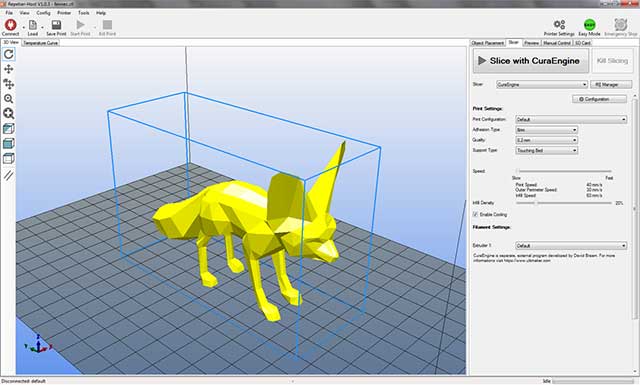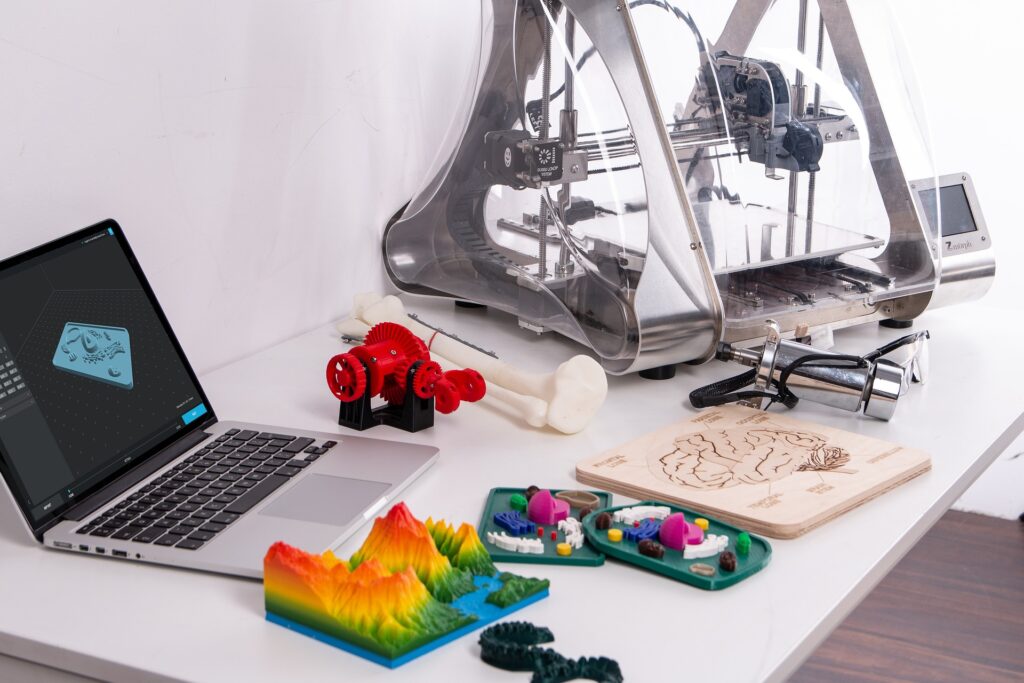Online 3d Printing
4/11/2022by admin
With our online 3D printing service, you can easily upload a model, select a material, choose the size for printing and let us print and ship your product. With our online 3D printing service, we can upload your 3D. Pinshape is a thriving 3D printing community & marketplace full of quality 3D printable files. Sell & share your designs, or download 3D files to print now! Professional3D Printing Service Get your parts quickly with our Online 3D Printing Service. Improve your business strategy and speed up your innovation. Discover your 3D printing application. Get inspired by all the benefits of 3D printing!
Understanding macromolecular structural elements and their roles in cellular function is critical for grasping basic concepts in biology and it can be challenging for students to master this content. These elements naturally exist at the nanoscale and are not observable with the naked eye. Oftentimes, this understanding is catalyzed by impactful illustrations and animations found online and in textbooks. In recent years, 3D printing technology has become readily accessible as an additional way to generate models and visualize entities of interest. We used 3D-printed models and online open-source molecular modeling analyses of the macromolecular structure of p53 to engage students with molecular concepts in cell biology and human health. The pedagogy strategy was integrated into an upper-level undergraduate course at a primarily undergraduate institution and a graduate biology course at a public research university.We describe the potential benefits and provide tools for others to integrate 3D-printed models into their teaching.
Custom 3d Printing
Combining 3D Printed Models & Online Molecular Modeling
While literature has demonstrated that using 3D-printed models and Jmol exercises separately in the undergraduate classroom improves learning, we chose to combine these complementary activities to deepen students’ understanding of the relationship between the structure and function of macromolecules through multimodal learning. We focused on the biology, structure and function of the human p53 protein, a tumor suppressor molecule famous for coordinating DNA repair, senescence and apoptosis, and for its frequent mutation in many different types of human cancers. The role of p53 as a transcription factor that binds DNA and activates target gene expression exemplifies the close relationship between macromolecular structure and cellular function.
 Other macromolecules with relevance to human disease or that are central to a variety of cellular processes would be ideal candidates for 3D-printed models to use in the classroom. When the macromolecule can be linked to human disease, its use in the classroom adds relevance to the structure-function relationships that are being studied. When the macromolecule is connected to many cellular processes, the structure-function relationships that are highlighted can be used to bridge and connect different concepts in the course you are teaching. Some additional examples of macromolecules that you can teach with 3D-printed models are Ras, Myc, Rb and histone proteins.
Other macromolecules with relevance to human disease or that are central to a variety of cellular processes would be ideal candidates for 3D-printed models to use in the classroom. When the macromolecule can be linked to human disease, its use in the classroom adds relevance to the structure-function relationships that are being studied. When the macromolecule is connected to many cellular processes, the structure-function relationships that are highlighted can be used to bridge and connect different concepts in the course you are teaching. Some additional examples of macromolecules that you can teach with 3D-printed models are Ras, Myc, Rb and histone proteins. 

How to Set Up 3D Printing and Online Molecular Modeling
Once you have defined the learning goals to be accomplished through multimodal 3D learning, you can easily identify a variety of molecules that are suitable for 3D printing and online molecular modeling. Here’s the process:- Search the Protein Database Bank (PDB) for your macromolecules of interest. If needed, download the PDB files and make a note of the database accession code. For users with little 3D printing experience, we suggest choosing smaller proteins with 2-3 secondary structures (beta sheet, alpha-helices). To narrow macromolecules with human disease relevance, cross-check your PDB candidates or selections using cBioPortal.
- Search NIH 3D Print Exchange for 3D-print files of interest using the database accession code from Step 1. If there are no 3D-print files of interest already available for download, you can enter your database accession code from Step 1 to generate a 3D-printable file. You can also modify a file to fit your needs.
- Check that relevant coordinates/files are accessible in Jmol or other open-source molecular viewer, such as iCn3D.
- Download the newly generated 3D-printing STL file of interest as needed.
- Print models using white filament and assemble the student kits. Each kit box contains a brush and paint for students to use the model as a 3D canvas to highlight structural elements of interest.
Reputable Sources for Commercial 3D Printing
Keep in mind that media, printing centers or makerspaces on campus will likely have 3D printers available for you to use for free or at low cost. These centers or spaces will likely also have staff members that will help you print the desired models. Alternatively, if none of these are available to you, there are online sites that specialize in offering affordable 3D printing services, including Craftcloud, 3D Experience Marketplace and Shapeways.Ways to Engage Students Using 3D Printed Structures
We engaged students with the 3D printed structures by providing worksheets that allowed them to do things like review past content learned in foundation courses, retrieve sequences and perform alignments of wildtype versus mutant molecules, as well as dig into the scientific literature and learn about how scientists made discoveries about the macromolecules being highlighted. These worksheets could be assigned as homework or as part of in-classroom activities. Students used their models throughout the semester as we learned about the diverse functions of their molecule.Online 3d Printing Software
3d Printer Service
We hope that these implementation ideas will be helpful to you as you set out to use 3D printed structures in your classroom, maybe you can come up with additional ways to use them that build on ours! Read the newest issue of the Journal of Microbiology and Biology Education, including Verónica A. Segarra and Richard J. Chi’s article: 'Combining 3D-Printed Models and Open Source Molecular Modeling of p53 To Engage Students with Concepts in Cell Biology'Comments are closed.